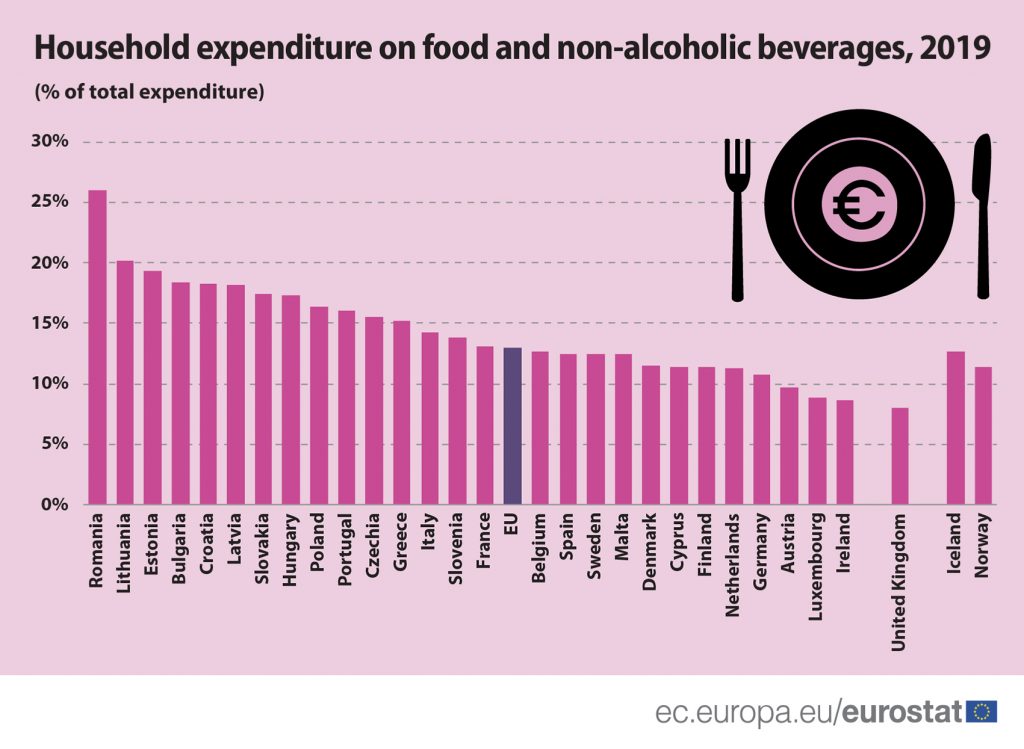“The resilience of the demand for fashion, footwear and beauty products is defying expectations of a slowdown in non-essential spending, despite the squeeze on spare cash from rising energy bills, and food and transport costs.”
.
A decade ago, according to the Telegraph, the British were already buying lots of clothing – but not much in the way of food:
British consumers have cut back on the amount of food they buy, but are purchasing more clothes, according to official figures
Consumers spending less on food and more on clothes
As figures from a couple of years ago, “Engel’s Law” shows that this disparity will increase:
The average UK household spends 8% of its outgoings on food consumed in the home. Contrast this to India, where 30% of household spending goes on food, or Nigeria where it’s 59%. Why are we so different?
Simply put, as incomes rise, the proportion of income spent on food falls. This is a well-established relationship known as Engel’s Law and happens because our demand for food is, to a certain extent, ‘non-expandable’. We may trade up and buy more high-value foods like meat but, in volume terms, our demand doesn’t change. In other words, we can only eat so much! Other types of spending are expandable – as we get richer we tend take more holidays and increase spending on other leisure pursuits. Compared to other countries of a similar GDP per capita (a good proxy for wealth), our share of spend on food is not particularly abnormal.
Why UK consumers spend 8% of their money on food | AHDB
And a comparison with other European countries shows that the UK, by no means the richest, nevertheless still spends the least on food:

How much are households spending on food? – Products Eurostat News – Eurostat
So, yes, the UK does have very cheap food:
Why the UK has such cheap food – BBC News
At the other end of the spectrum, however, looking at ‘fast fashion’, at least among teenage girls, the UK continues to spend wildly on throwaway clothing:
What do you know about the biggest fast-fashion company? – Vision Group for Sidmouth
And again it’s huge in comparison with other European countries, again, according to the Telegraph:
Do Brits really spend more on fashion than the French?
During the current recession, you would expect even such entrenched habits to change:
But apparently not:
As the cost of living crisis builds up UK shoppers are slashing their budgets in almost all areas. But there is a notable exception – the money spent on clothing is above pre-pandemic levels, the return of weddings, holidays and socialising fuelling a boom in “revenge spending” or buying those treats missed over months of pandemic lockdowns.
Shoppers are forking out almost a fifth more on clothing than last year, research from Kantar for the Guardian has found, taking the value 1% ahead of the 2019 figure.
The resilience of the demand for fashion, footwear and beauty products is defying expectations of a slowdown in non-essential spending, despite the squeeze on spare cash from rising energy bills, and food and transport costs.
‘Revenge spending’: demand for fashion defies cost of living crunch | Retail industry | The Guardian